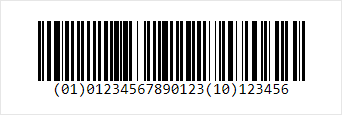BxSmartPrintPro standard field names
Standard fields that can be used when designing labels
Below is a list of standard fields that are available for designing labels in BxSmartPrintPro. These fields are fetched via SQL queries, extracting data from the various ERP systems supported. If additional fields are required, they can easily be added via BxAdmin → SQL Integration.
This guide also includes examples of how to use or combine these fields.
The listed values should be entered in the "BX" field of the Content column to the right in the Design tab of BxSmartPrintPro.
Standard values (Supported across all ERPs)
| BxSmartPrintPro Value | Field Description |
| productname | Name/description of the product. |
| productno | Product number, can also serve as a barcode. |
| gtin | Barcode from the ERP's EAN field. If unavailable, the product number field can be used instead. |
| location | Warehouse location. |
| price | Price excluding VAT. |
| priceincmva | Price including VAT. Not standard - must be added to the query. Often calculated as price * 1.25. |
| unitname | Unit name, e.g., pcs, pack, pallet, etc. |
| supplierproductno | Supplier's product number |
| suppliername | Supplier's name. Not standard across all ERP's. |
| warehouse | Warehouse number, e.g., 1,2, etc. |
Fields for Logged-In users
| BxSmartPrintPro Value | Field Description |
| Printemployee | Prints the employee number of the logged-in terminal user (based on ERP data). |
| printemployeename | Prints the name of the logged-in terminal user (based on ERP data). |
Standard Built-In fields in BxSmartPrintPro
| BxSmartPrintPro Value | Field Description |
| printingdate | Prints the current date. Use DateTime dd.MM.yyyy for the Norwegian format, e.g., 01.01.2020 |
| bxpageno | Sequential number for the label. Resets to 1 with each new print job |
| bxpagecount | Total number of labels printed. Resets with each new print job. Can be combined with bxpageno for formats like 1/5. |
Examples
Date field
Print the current date in the Norwegian format:
Sequential Page numbers
Generate sequential numbers with specific formatting:
Bxpageno example:{bxpageno:int:D3}
- Format: Integer
D3creates three-digit numbers, e.g.,001,002, ...,999. - Resets to
001for the next print job.
Combining fields
You can combine multiple values in the same field using {}.
For example:{productno} - {location}
This will appear as: 1234 - H1R1. Note that spaces and dashes are treated as part of the value.
GS1-128 GTIN
To create a valid GS1-128 GTIN code with a batch number, follow these steps:
- Most ERP's use EAN codes with 13 digits. GS1-128 requires:
• A GTIN AI(01), with a total of 14 digits.
• A batch number AI(10)and the corresponding batch number. - Format the field:
[01]0{gtin}[10]{batchno}The example code output should look like this:
(01)01234567891123(10)123456• If the ERP stores 14 digits, omit the leading
0.


Using QR Codes for GS1 Format
When generating QR codes, omit the brackets []. Format as:
010{gtin}10{batchno}
Example output in the QR code:
010123456789012310123456


GS1 Expiry Date Example
To print a GS1 code with an expiry date (AI 17) from BxMobile:
- The date format must be
YYMMDD(Year-Month-Day). - Use the following field:
010{gtin}17{expirydate:datetime:yyMMdd} - Ensure the month is uppercase
MMas lowercasemrepresents minutes, which is invalid for AI17).
Example:
Output for an expiry date of December 31, 2025:
010123456789012317251231

